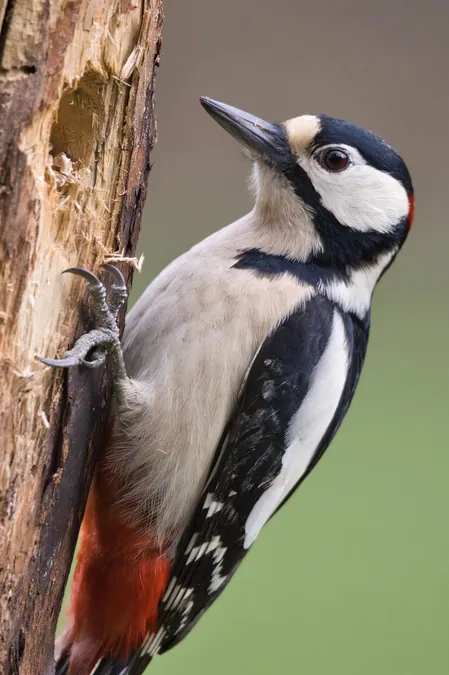
Revolutionary Birdwatching Study Unveils How Fire Affects Bird Populations Across the U.S.!
2025-09-02
Author: Olivia
New Insights on Fire Management through Birdwatching
In a groundbreaking study published in Frontiers in Ecology and the Environment, scientists have harnessed the power of participatory science to explore how bird populations respond to wildfires across the continental United States. This unparalleled research offers critical insights that could transform fire management techniques, enhancing bird populations in various regions.
Spotlight on Key Bird Species
The research focused on six bird species whose conservation statuses directly inform fire management decisions. The findings revealed striking regional differences in how wildfires impact these avian populations.
For example, the Red-cockaded Woodpecker—a species designated as a Yellow Alert Tipping Point under the Endangered Species Act—thrived in areas of frequent fire in Louisiana and North Carolina, showing a dramatic population increase compared to elsewhere in the Southeast.
Contrasting Outcomes in Different States
Conversely, the American Goshawk demonstrated intriguing sensitivity to fire, with populations in California and Colorado thriving in longer-unburned areas, while their numbers dwindled in Idaho over time since the last blaze. This nuanced understanding is essential for fire managers aiming to determine optimal strategies for prescribed burns.
"Managing forest and fire conditions for biodiversity is not a one-size-fits-all task," emphasized lead author Andrew Stillman from Cornell Lab of Ornithology. "We require localized insights to tailor our management approaches effectively."
The Power of Citizen Science
This study's wealth of data stemmed from bird enthusiasts across the nation, who contributed over 31 million bird observation lists via the Cornell Lab's eBird platform. Combining this extensive data with wildfire frequency and severity metrics from 2011 to 2021, researchers uncovered essential local and regional wildfire impacts—previously a crucial missing piece in fire management.
Impactful Collaboration for Future Fire Management
Collaborating with the U.S. Forest Service, the findings promise to refine fire management practices that champion bird populations. Techniques like prescribed burns—intentional, controlled fires known to benefit many ecosystems—are among the strategies that could be re-evaluated and optimized based on these new insights.
According to Sarah Sawyer, national wildlife ecologist for the U.S. Forest Service, the study's results could be integrated into current management plans almost immediately to enhance conservation efforts.
Looking Ahead: Continuing Research on Bird Populations
Now, researchers are diving into the responses of over 100 additional bird species in the wildfire-prone western U.S., where recent years have seen escalating fire frequency and intensity. By leveraging eBird data, these ongoing investigations aim to further improve fire management and support the health of wildlife and ecosystems.









 Brasil (PT)
Brasil (PT)
 Canada (EN)
Canada (EN)
 Chile (ES)
Chile (ES)
 Česko (CS)
Česko (CS)
 대한민국 (KO)
대한민국 (KO)
 España (ES)
España (ES)
 France (FR)
France (FR)
 Hong Kong (EN)
Hong Kong (EN)
 Italia (IT)
Italia (IT)
 日本 (JA)
日本 (JA)
 Magyarország (HU)
Magyarország (HU)
 Norge (NO)
Norge (NO)
 Polska (PL)
Polska (PL)
 Schweiz (DE)
Schweiz (DE)
 Singapore (EN)
Singapore (EN)
 Sverige (SV)
Sverige (SV)
 Suomi (FI)
Suomi (FI)
 Türkiye (TR)
Türkiye (TR)
 الإمارات العربية المتحدة (AR)
الإمارات العربية المتحدة (AR)